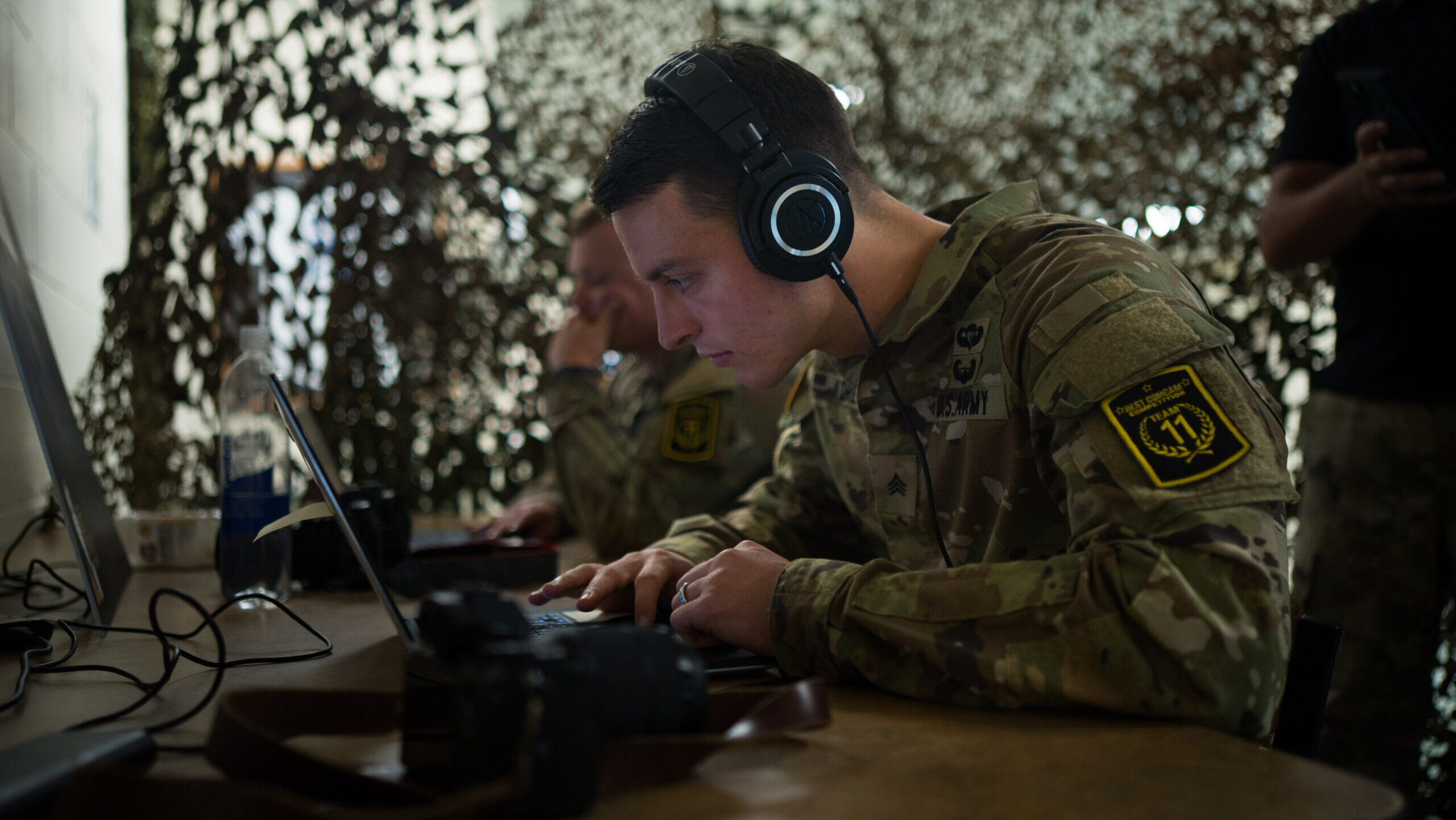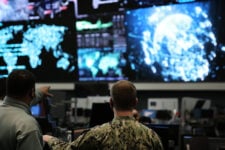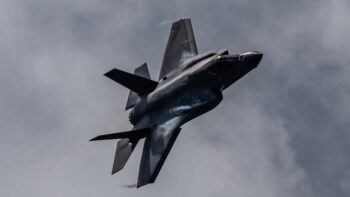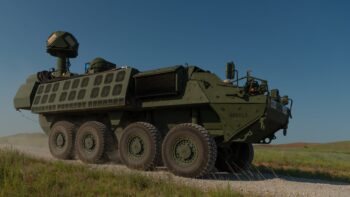
U.S. Army, Sgt. RJ Koreis edits on laptop in “Technical Lanes” event, during the 2023 Spc. Hilda I. Clayton Best Combat Camera Competition at Fort A.P. Hill, Virginia, May 24, 2023. (U.S. Army photo by Spc. Noah Martin)
WASHINGTON — Two weeks after the chief of the Pentagon’s communication branch previewed his strategic goals for 2025-2030, the Defense Information Systems Agency has published the full five-year plan, entitled “DISA Next”.
In the foreword, DISA Director Lt. Gen. Robert Skinner lays out his three top priorities, three ambitious “DOD-wide, enterprise-level solutions” he wants DISA to build: a “common IT environment” to replace DoD’s current jungle of disparate systems, a more robust cloud computing system and zero-trust cybersecurity in IT systems and the cloud.
Over and over, from Skinner’s introduction on, the strategy [PDF] emphasizes DISA’s identity as a “combat support agency,” responsible for keeping commanders from the president on down in contact, even in time of war. That imperative drives what’s arguably the most ambitious objective in the entire document: “By 2030 DISA has a globally accessible, software defined, transport environment — unconstrained by bandwidth, impervious to denial, disruption, intermittent or limited access, that is seamless to the user … [a] self-healing and secure fabric that provides warfighters constant connectivity and persistent access to their mission-relevant data.”
A subsequent passage specifically calls for “connecting the Joint Force and the ever-increasing military internet of things, from anywhere-to-anywhere, twenty-four hours a day, seven days a week” to implement what’s known as CJADC2: a worldwide meta-network connecting and coordinating all the armed services’ forces across land, sea, air, space, and cyberspace.
CJADC2 experiments have underlined the importance of new methods of managing vast amounts of data — including artificial intelligence — will be in a future fight, especially for forward-deployed forces on the “tactical edge” where bandwidth is limited even before an adversary starts jamming transmissions and hacking networks. While the services largely build their own tactical networks for the battlefield, the new strategy emphasizes that DISA builds and operates the “DISN backbone” for the global Defense Information Systems network: “To ensure there are no breaks in service and that all traffic arrives at its destination unimpeded, it is critically important that DISA build survivability into the DISN.”
RELATED: The cloud, fiber optics and hiding in basements: Army races to adapt new command post threats
Further objectives in the document call for expending commercial cloud services to DoD locations worldwide — under the Joint Operational Edge (JOE) program — and for implementing data standards to allow the rapid, seamless exchange of information amongst disparate systems. (In a humble moment, the strategy does note that the Pentagon’s Chief Data & AI Officer sets those standards, and DISA merely implements them).
“I am confident the agency will succeed – we have no other choice,” Skinner says in his foreword, invoking the threat of “great power competition” with China. “We are the combat support agency entrusted with connecting senior leaders and warfighters across the globe 24/7 — often during the most stressful and dangerous moments of their lives.”






















